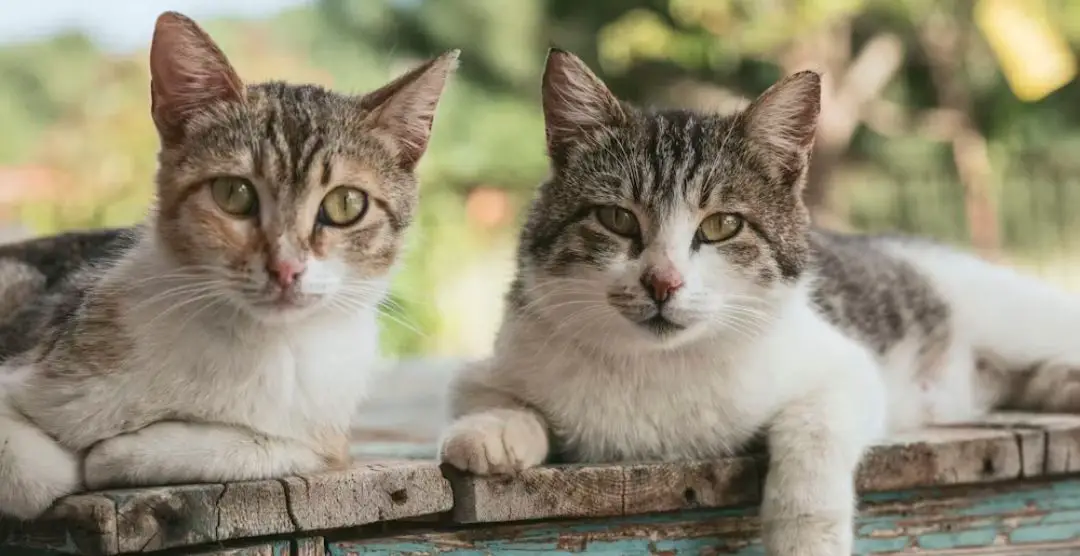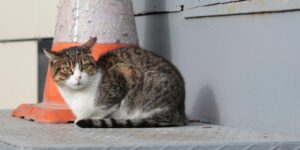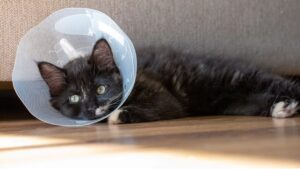Get ready to dive into the captivating world of unspayed female cat behaviors!
If you’ve ever wondered why your feline friend exhibits certain unique habits like yowling or restless behavior, this blog post is a must-read.
Join me as I unravel the intriguing behaviors of unspayed female cats and explore the importance of addressing these behaviors for a harmonious and contented household.
Let’s get started!
The Reproductive Cycle of Unspayed Female Cats
Female cats who are not spayed go through a reproductive cycle called estrus, which is sometimes known as “heat.”
The presence of male pheromones can trigger this cycle, which usually happens every two to three weeks.
The female cat goes through a phase of increased vocalization and affection during which she may also engage in mating actions like rolling on the ground or rubbing up against objects.
The cat will go through a time of rest if it is not bred, and this cycle will repeat until the animal is spayed or gets pregnant.
Unspayed Female Cat Behaviors
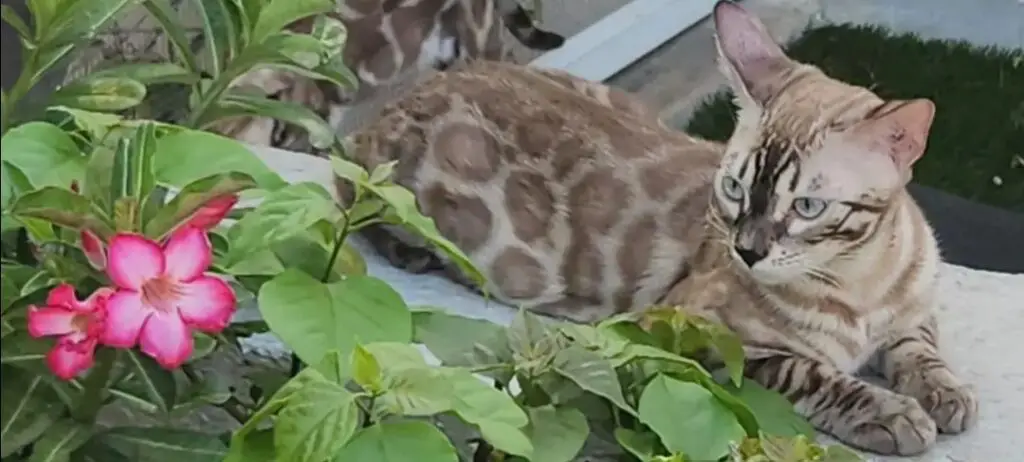
Female cats who have not been spayed may display specific behaviors that are impacted by their cycle of reproduction.
They frequently yowl as a means of attracting potential partners. They might also start spraying pee to indicate their territory and grow more aggressive.
Unspayed female cats may also get agitated and try to break out of the house in an effort to find a partner.
Spaying your female cat is a good idea if you want to control these habits and avoid undesired litters.
That being said, let’s take a look at some of the most common unspayed female cat behaviors you should know:
Marking Territory by Urinating in Certain Areas: One habit that unspayed female cats frequently exhibit is marking their territory by urinating in particular locations.
Their innate need to interact with other cats is what motivates this behavior.
Your cat may be engaging in marking behavior if you notice them urinating outside of the litter box, especially in certain areas like doorways or corners.
Furthermore, because urine contains pheromones that aid in their establishment, it could smell strongly.
It is advised to spay your cat in order to address this habit since this can greatly lessen or completely eradicate the impulse to mark territory.
Lifting or Wiggling Their Bottom and Tail: Unspayed female cats also frequently exhibit the characteristic of elevating or wriggling their tail and buttocks.
Female cats use this action, called “presenting,” to indicate that they are ready to mate.
A female cat may adopt a posture where her tail is held to the side and her hindquarters are lifted when she is in heat.
Restlessness and increased vocalization are frequently seen alongside this behavior.
The best defense against this behavior is to spay your cat, as this will stop the hormonal fluctuations brought on by heat cycles.
Vocalizing Loudly Especially When in Heat: Meowing or yowling loudly and persistently is a common vocalization displayed by unspayed female cats during their heat cycle.
They use this vocalization to draw in male cats and indicate that they are open to mating.
Your cat may be in heat if you hear her vocalizing more often and loudly than usual, especially during certain seasons of the year.
Because spaying stops the hormonal changes that cause heat cycles, it can help lessen or even completely eradicate this behavior in your cat.
Rubbing Against Things and People Frequently: Both spayed and unspayed female cats have an innate tendency to brush up against things and people. Unspayed females, however, could behave in this way more regularly.
They mark their territory by rubbing up against objects and leaving their scent behind.
This behavior may be indicated if your cat is rubbing more frequently than usual against walls, furniture, or even your legs.
Spaying your cat can help limit the frequency of this behavior by reducing the impact of hormonal changes, but it won’t fully stop it.
Rolling on the Floor and Exposing Belly: A female cat may roll on the ground and reveal her tummy as part of her mating behavior when she is in heat.
Other signs including restlessness, increased vocalization, and loving behavior toward people or objects are frequently present along with this behavior.
A female cat will roll around on the ground and show her tummy to prospective mates as a method of indicating her availability.
She is indicating that she is open to mating by baring her belly. In addition to attracting male cats, this habit allows female cats to leave their fragrance on furniture, the floor, and other items.
Regularly Craving to Go Outside or Attempting to Escape: An unspayed female cat that is in heat could feel the need to run outside or out of the house. It is her innate need to find a partner that motivates this conduct.
The natural tendency of female cats to seek out male cats for mating occurs when they are in heat.
They might become more interested in the outside, attempt to break out through open doors or windows, or meow or scratch at the door nonstop.
During this period, it’s critical to keep a tight eye on your cat to avoid any unexpected pregnancies or other outdoor hazards like contact with other animals or vehicles.
Regular Grooming Around Their Genital Area: Unspayed female cats may overgroom the area around their genitalia during heat cycles.
The hormonal shifts taking place within their bodies are what are causing this behavior.
Female cats are increasing their attractiveness to male cats and distributing their smell by grooming themselves in this area.
While little grooming is normal, overgrooming can cause skin irritation or fur loss.
It’s best to speak with your veterinarian if you see your cat cleaning her genital area excessively or if she shows any symptoms of discomfort.
If necessary, they can determine whether there are any underlying problems and administer the proper treatment.
Exhibiting Bursts of Energy and Hyperactivity: When in heat, unspayed female cats may exhibit frenzied energy and agitation.
This behavior can be characterized by abruptly running around the house, becoming more playful, and chasing toys or made-up targets.
They use these energy bursts as a means of letting go of surplus energy and pent-up fury brought on by hormonal changes during their heat cycle.
Playtime, exciting activities, and interactive toys can help your cat refocus its energy in a constructive and enjoyable way.
To keep your cat cognitively and physically occupied during this period, it’s crucial to offer a safe and engaging environment.
Related: Female Cat Behavior After Mating
Managing Unspayed Female Cat Behavior
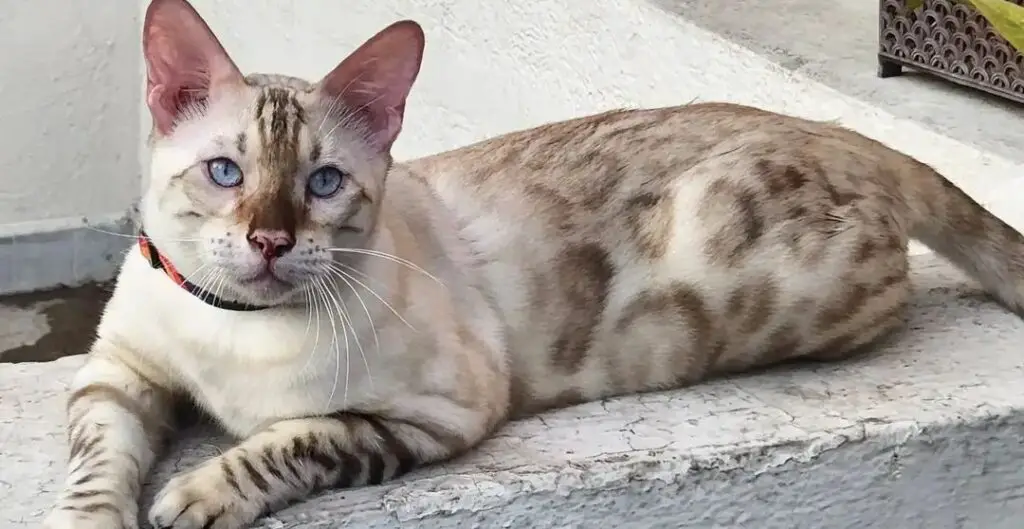
In order to permanently minimize undesirable behaviors such as yowling, spraying, and restlessness, spaying female cats is a must when dealing with their unspayed tendencies.
Providing them with lots of playtime, engaging toys, and scratching posts can help them channel their energy in a constructive way.
An atmosphere that is serene and features high perches and hiding places might help reduce tension and anxiety.
Effective behavior modification is also possible with consistent training that makes use of positive reward approaches.
Last but not least, giving your cat a schedule for eating and cleaning the litter box might make them feel secure.
Related: Behaviors of a female cat in heat.
Benefits of Spaying Female Cats
Female cat spaying has several advantages for both the cat and her human friends.
First of all, it lessens the burden on animal shelters and the number of homeless cats by preventing undesired litters.
Second, it removes the possibility of developing illnesses related to reproduction, like ovarian cancer and uterine infections.
Thirdly, behavioral problems like yowling during heat cycles and marking territory might be lessened with spaying.
Finally, by lowering the likelihood of specific medical disorders, it can increase the cat’s longevity.
Spaying is a sensible decision that enhances female cats’ wellness and helps the cat population become healthier.
Health Risks Associated with Not Spaying Female Cats
Female cats who are not spayed run a number of health concerns. The development of diseases related to reproduction, such as ovarian or uterine cancer, is among the worst risks.
These cancers can be fatal and need prolonged medical care, cats who have never had their uterus spayed are more likely to get pyometra, a serious condition that can be lethal if left untreated.
Finally, female cats that have not had their sexes fixed are more likely to become pregnant unintentionally, which can result in difficult deliveries and a rise in the number of stray cats.
In order to reduce these health concerns and improve the general well-being of female cats, spaying them is imperative.
Behavioral Changes After Spaying a Female Cat
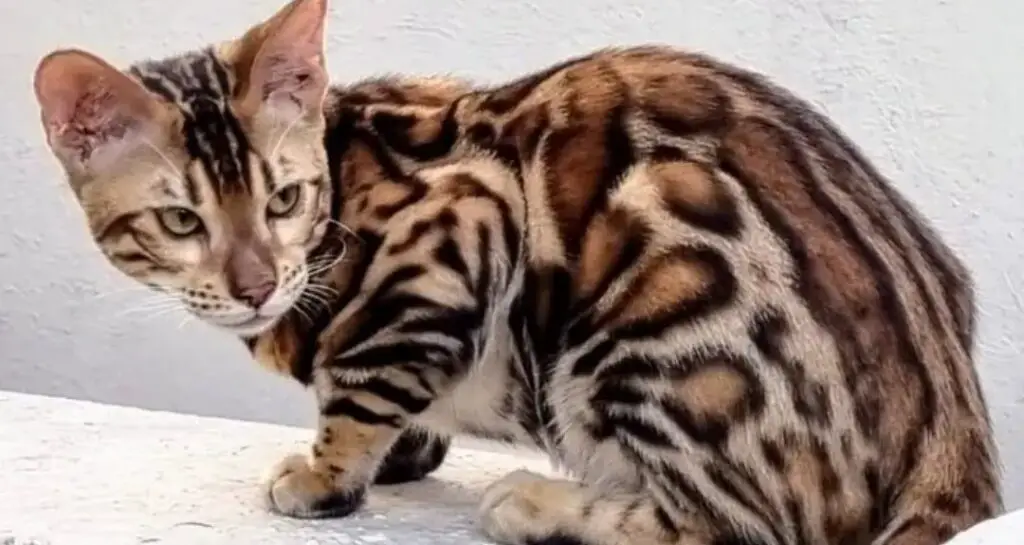
Certain typical behavioral changes may result from spaying your female cat.
Following the spaying operation, your female cat can exhibit more affection, calmness, a decreased propensity to stray, and less prone to aggression, as their reproductive instincts are no longer driving their behavior.
Furthermore, spaying can lower the likelihood of some medical conditions and unintended pregnancies.
Keep in mind that every cat is different, so pay special attention to your pet and give her the care and attention she requires after being spayed.
Conclusion
In summary, unspayed female cat behaviors can be both fascinating and challenging. From yowling and restlessness to potential health risks like uterine infections and certain cancers, these behaviors highlight the importance of spaying. By opting for spaying, pet owners can ensure a happier and healthier life for their beloved feline companions, while also minimizing the impact on household harmony.
Frequently Asked Questions
Why does my unspayed female cat yowl and become restless?
Unspayed female cats may yowl and exhibit restlessness during their heat cycles, as they are seeking a mate. This behavior is driven by hormonal changes and instinctual desires. Spaying your cat can eliminate these behaviors and provide her with a calmer and more contented life.
Are unspayed female cats more prone to certain health issues?
Yes, unspayed female cats are at a higher risk of developing uterine infections, mammary tumors, and ovarian cysts. Spaying not only prevents these potential health problems but also eliminates the risk of unwanted pregnancies and the complications associated with breeding.
Can unspayed female cats exhibit aggressive behavior?
Unspayed female cats may display aggression, especially when defending their territory or during their heat cycles. This behavior is influenced by hormonal fluctuations. Spaying can help reduce aggression and promote a more balanced temperament in female cats.
Do unspayed female cats have shorter lifespans?
Unspayed female cats are at a higher risk of certain health issues, such as reproductive cancers, which can impact their lifespan. By spaying your cat, you can help prevent these health risks and increase her chances of living a longer, healthier life.

